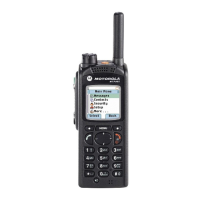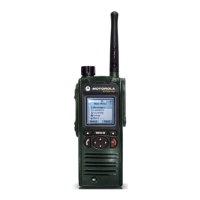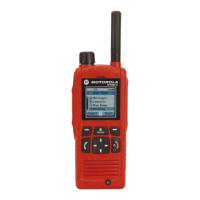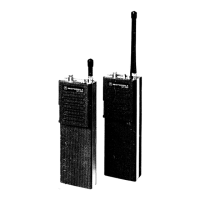Glossary
Advanced RISC Machine (ARM) A
processor architecture based on a 32-bit reduced
instruction set (RISC) computer.
Air Interface Encryption (AIE) Provides
confidentiality on the radio link over the air.
Algebraic Code Excited Linear
Prediction A speech (or other audio signals)
encoding algorithm where a limited set of pulses
is distributed as excitation to linear prediction
filter.
Abbreviation:ACELP
Analog Refers to a continuously variable
signal or a circuit or device designed to handle
such signals.
Analog-to-Digital Converter A device
that converts analog signals into digital data.
Also known as codec.
Abbreviation:ADC
Automatic Gain Control (AGC) A
process or means by which gain is automatically
adjusted in a specified manner as a function of
a specified parameter, such as received signal
level.
BALUN Balanced-unbalanced converter.
Band Frequencies allowed for a specific
purpose.
Bluetooth A wireless protocol utilizing short-
range communications over short distances.
CMOS Complementary Metal-Oxide
Semiconductor
Co-uP Co-Processor
Customer Programming Software
(CPS) Software with a graphical user interface
containing the feature set of a radio.
Default A pre-defined set of parameters.
Differential Quadrature Phase Shift
Keying (DQPSK) A sub-class of the QPSK
methods of transmitting data. Rather than using
the absolute value of phase (as in QPSK),
only the difference between the current value of
phase and the previous value of phase are used.
By using phase differences, the implementation
is simpler (since an absolute reference source is
not required).
Digital Refers to data that is stored or
transmitted as a sequence of discrete symbols
from a finite set; most commonly this means
binary data represented using electronic or
electromagnetic signals.
Digital-to-Analog Converter A device
that converts a digital value to a corresponding
dc voltage value.
Abbreviation:DAC
Digital Signal Processor (DSP) A
special-purpose microprocessor that can perform
math calculations very rapidly.
Electrically Erasable Programmable
Read-Only Memory (EEPROM)
Integrated circuit used to store data, which can
be erased by electrical methods.
Federal Communications
Commission (FCC) Regulates interstate
and international communications by radio,
television, wire, satellite and cable in all
50 states, the District of Columbia, and
U.S. territories. It was established by the
Communications Act of 1934 and operates as an
independent U.S. government agency overseen
by Congress. The commission is committed
to being a responsive, efficient and effective
agency capable of facing the technological and
economic opportunities of the new millennium.
MN002465A01-AN
Glossary
75

